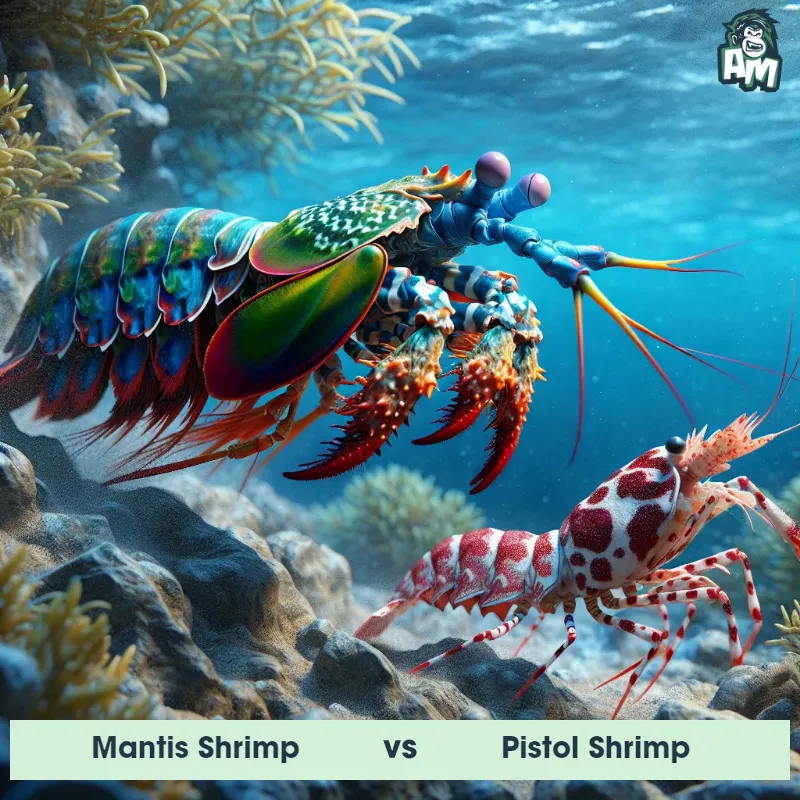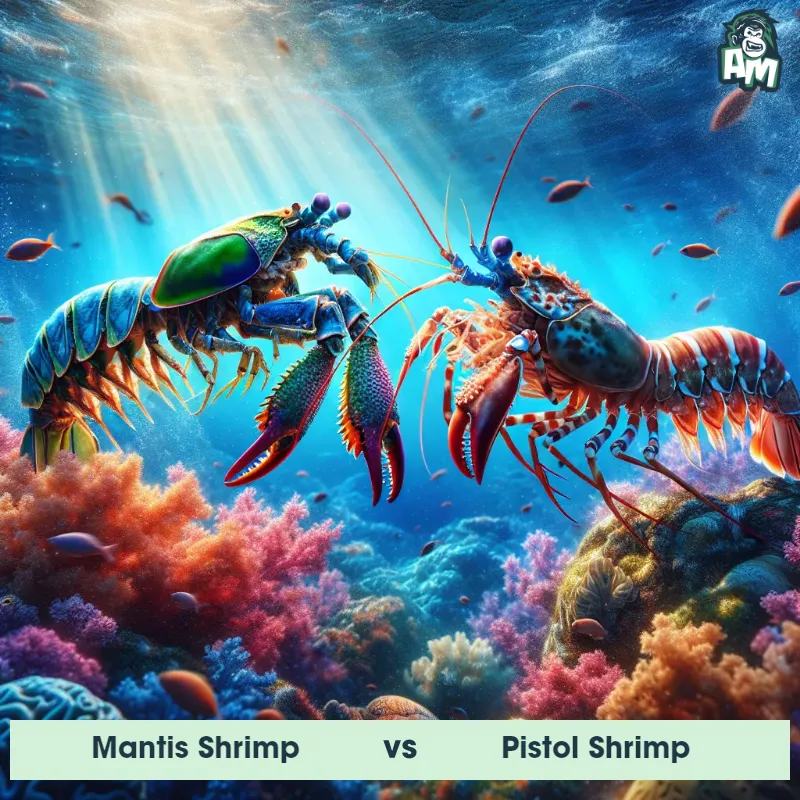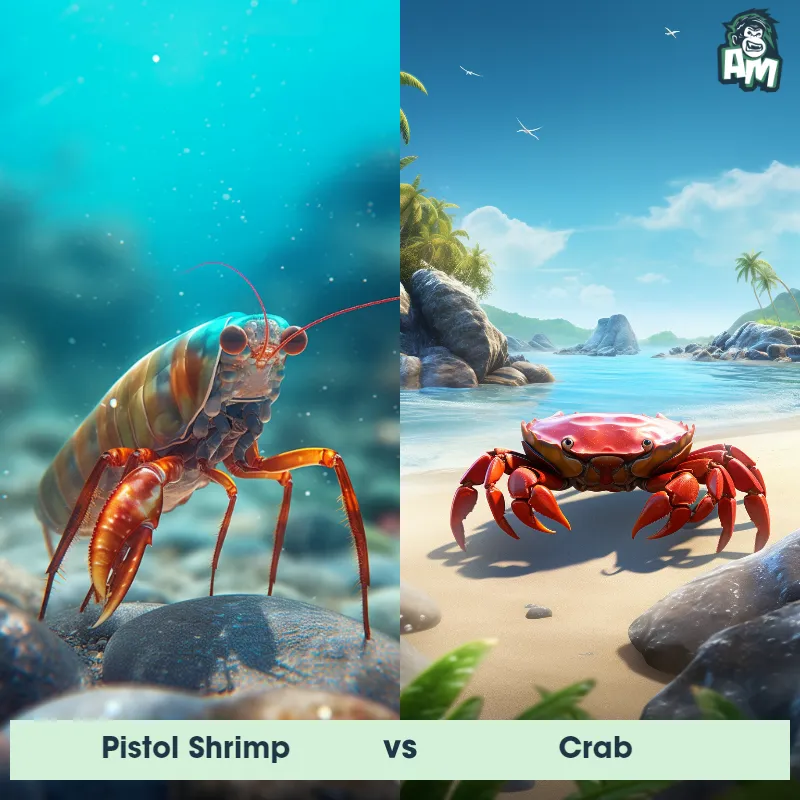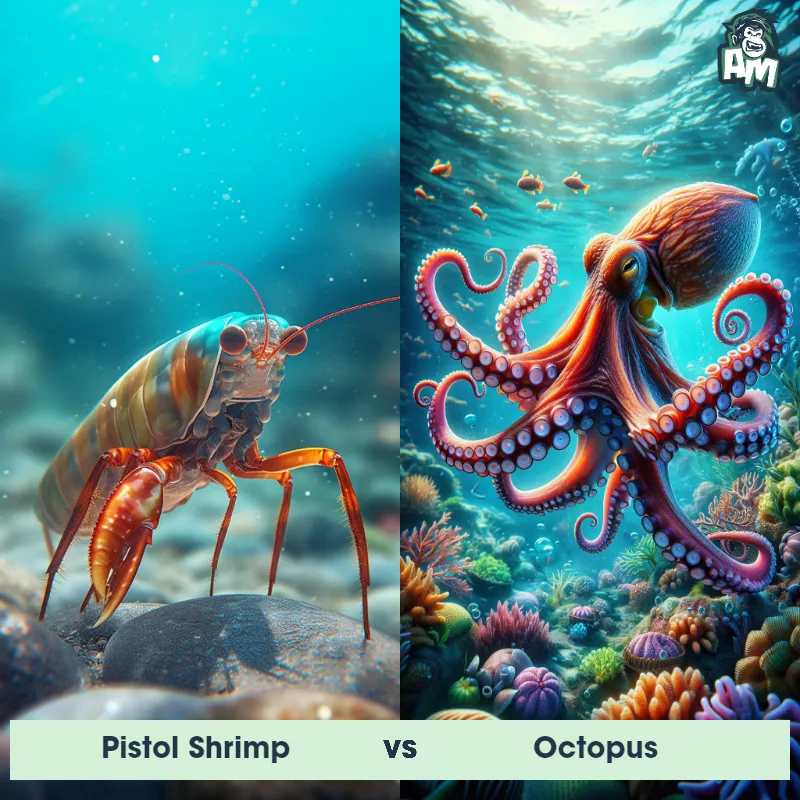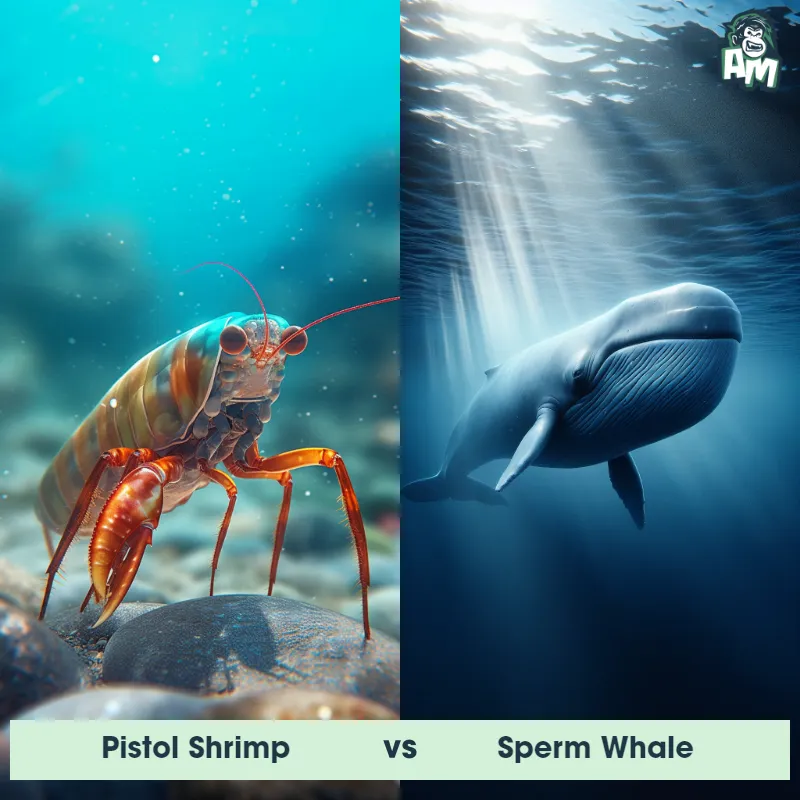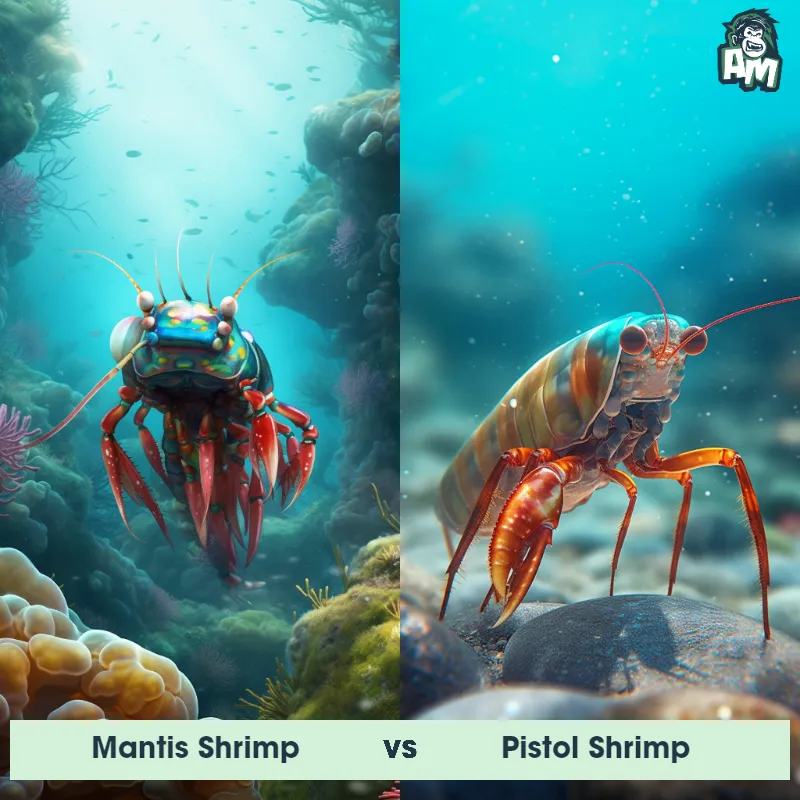The Pistol Shrimp
The Pistol Shrimp, also known as Alpheidae, is a small crustacean that belongs to the family Alpheidae. These fascinating creatures are famous for their unique hunting technique and their vibrant colors. Pistol Shrimp have a distinctive claw that is larger than their body, making up about half of their total size. This specialized claw is asymmetrical and has a hinged joint, allowing the shrimp to store energy and create a powerful snapping motion. Their bodies are typically around 3cm long, although some species may reach up to 5cm.
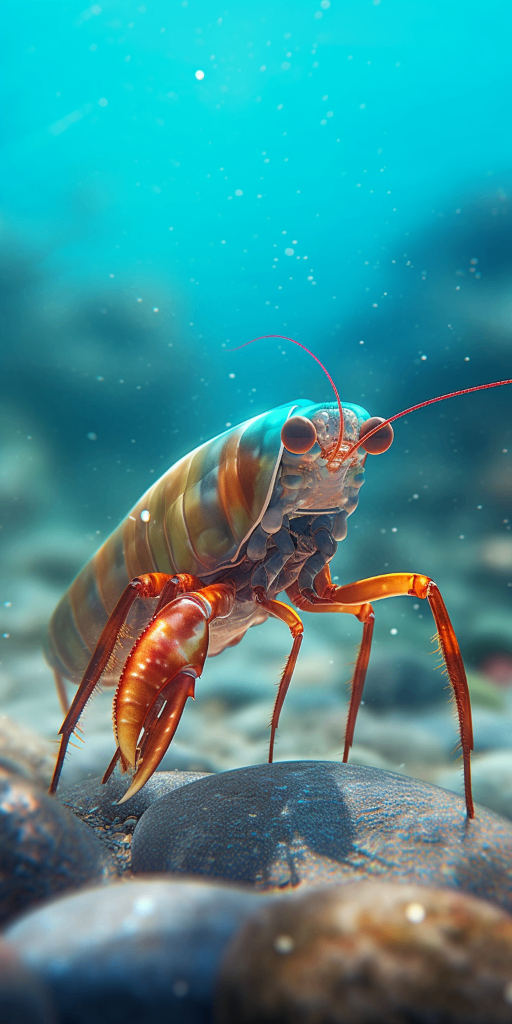
| Pistol Shrimp | |
|---|---|
| Size | Less than 2 inches (5.08 cm) |
| Weight | Less than 0.14 ounces (4 grams) |
| Speed | Speed: 1.5 mph (2.4 km/hr) |
| Key Strength | Powerful snapping claw |
| Biggest Weakness | Small size and vulnerability to larger predators |
| Scientific Name | Alpheidae |
| Family | Alpheidae |
| Habitat | Marine |
| Geography | Tropical and subtropical waters worldwide |
| Diet | Small fish, crustaceans, and plankton |
| Lifespan | 1 year - 3 years |

The Pistol Shrimp
The Pistol Shrimp, also known as Alpheidae, is a small crustacean that belongs to the family Alpheidae. These fascinating creatures are famous for their unique hunting technique and their vibrant colors. Pistol Shrimp have a distinctive claw that is larger than their body, making up about half of their total size. This specialized claw is asymmetrical and has a hinged joint, allowing the shrimp to store energy and create a powerful snapping motion. Their bodies are typically around 3cm long, although some species may reach up to 5cm.
Fun Fact: The Pistol Shrimp is capable of producing an astonishingly loud sound, reaching levels of up to 200 decibels, which is louder than a gunshot or a rock concert. This sound is produced when the shrimp rapidly opens and closes its specially adapted claw, creating a cavitation bubble that collapses with incredible force, stunning or killing nearby prey.
| Pistol Shrimp | |
|---|---|
| Size | Less than 2 inches (5.08 cm) |
| Weight | Less than 0.14 ounces (4 grams) |
| Speed | Speed: 1.5 mph (2.4 km/hr) |
| Key Strength | Powerful snapping claw |
| Biggest Weakness | Small size and vulnerability to larger predators |
| Scientific Name | Alpheidae |
| Family | Alpheidae |
| Habitat | Marine |
| Geography | Tropical and subtropical waters worldwide |
| Diet | Small fish, crustaceans, and plankton |
| Lifespan | 1 year - 3 years |
Match Highlights
Pistol Shrimp Matchups
We use AI to simulate matchups between the Pistol Shrimp and other animals. Our simulation considers size, strength, and natural predatory behaviors to determine the most likely outcome.

Can't find the Matchup you want?
Create Your Own MatchupPistol Shrimp: Diet, Predators, Aggression, and Defensive Behaviors
What do Pistol Shrimp eat?
Pistol Shrimp are omnivores, which means they eat both plant and animal matter. They primarily feed on small fish, shrimp, algae, and plankton. They have a unique hunting behavior where they use their specialized claw to stun or kill their prey before consuming it.
Do Pistol Shrimp have any predators?
Pistol Shrimp have some natural predators in the ocean, including larger fish, crabs, and octopuses. However, their ability to create loud noises with their claw snap helps in deterring some potential predators. This noise can scare off smaller threats and alert larger predators to their presence.
Are Pistol Shrimp aggressive?
Pistol Shrimp are generally not aggressive towards other marine creatures unless provoked or threatened. They prefer to use their powerful claw for hunting and defending themselves rather than displaying aggressive behavior toward others.
Do Pistol Shrimp fight?
Pistol Shrimp may engage in territorial disputes or competition for resources with other shrimp. They have been observed to engage in claw wrestling matches with rivals to establish dominance or defend their territory.
How do Pistol Shrimp defend themselves?
Pistol Shrimp defend themselves primarily by using their powerful claw to create a sonic blast. By quickly closing their claw, they create a cavitation bubble that collapses, producing a high-speed jet of water and a loud popping sound. This shockwave can stun, injure, or deter potential threats.
What is Pistol Shrimp's biggest weakness in a fight?
Despite their impressive claw strength and defensive mechanism, Pistol Shrimp have a vulnerability in their soft body. If a predator manages to get past their defenses and avoid the sonic blast, the shrimp's soft body is susceptible to damage. In a fight, protecting their vulnerable body becomes crucial for their survival.
Fun Fact: Pistol Shrimp are known for their unique symbiotic relationship with gobies, a type of fish. The gobies act as lookouts and warn the shrimp of approaching predators, while the shrimp provides the goby with a burrow to live in. This unusual partnership benefits both species, as the goby gains protection and the shrimp has an early warning system.
Fun Fact: Some species of Pistol Shrimp have developed a fascinating form of communication. By rapidly closing their claws, they produce distinctive clicking sounds in a specific pattern. These clicks are believed to be used for territorial displays or courtship rituals, allowing the shrimp to communicate with each other in their complex underwater environment.



